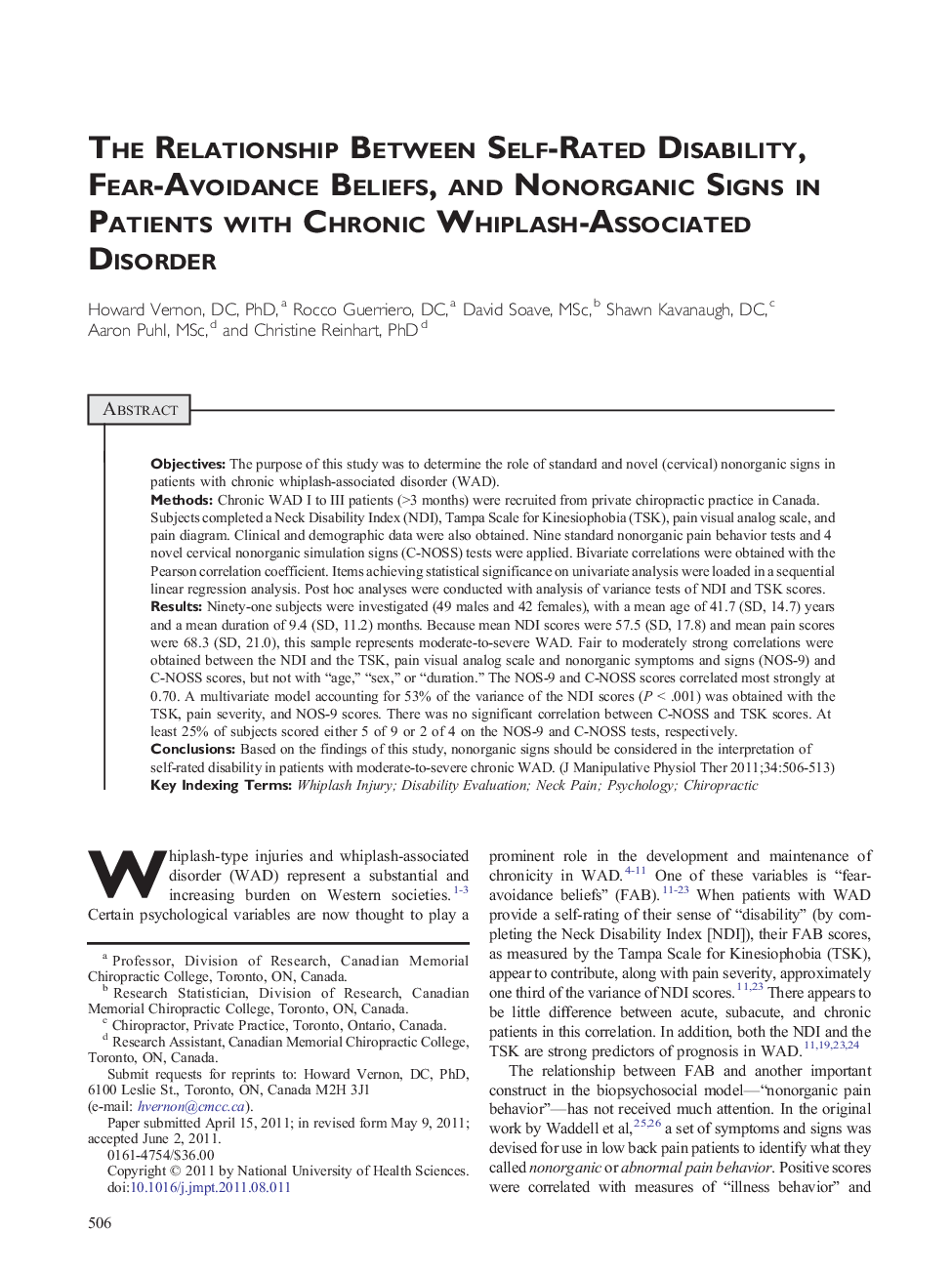| کد مقاله | کد نشریه | سال انتشار | مقاله انگلیسی | نسخه تمام متن |
|---|---|---|---|---|
| 2620913 | 1135657 | 2011 | 8 صفحه PDF | دانلود رایگان |

ObjectivesThe purpose of this study was to determine the role of standard and novel (cervical) nonorganic signs in patients with chronic whiplash-associated disorder (WAD).MethodsChronic WAD I to III patients (>3 months) were recruited from private chiropractic practice in Canada. Subjects completed a Neck Disability Index (NDI), Tampa Scale for Kinesiophobia (TSK), pain visual analog scale, and pain diagram. Clinical and demographic data were also obtained. Nine standard nonorganic pain behavior tests and 4 novel cervical nonorganic simulation signs (C-NOSS) tests were applied. Bivariate correlations were obtained with the Pearson correlation coefficient. Items achieving statistical significance on univariate analysis were loaded in a sequential linear regression analysis. Post hoc analyses were conducted with analysis of variance tests of NDI and TSK scores.ResultsNinety-one subjects were investigated (49 males and 42 females), with a mean age of 41.7 (SD, 14.7) years and a mean duration of 9.4 (SD, 11.2) months. Because mean NDI scores were 57.5 (SD, 17.8) and mean pain scores were 68.3 (SD, 21.0), this sample represents moderate-to-severe WAD. Fair to moderately strong correlations were obtained between the NDI and the TSK, pain visual analog scale and nonorganic symptoms and signs (NOS-9) and C-NOSS scores, but not with “age,” “sex,” or “duration.” The NOS-9 and C-NOSS scores correlated most strongly at 0.70. A multivariate model accounting for 53% of the variance of the NDI scores (P < .001) was obtained with the TSK, pain severity, and NOS-9 scores. There was no significant correlation between C-NOSS and TSK scores. At least 25% of subjects scored either 5 of 9 or 2 of 4 on the NOS-9 and C-NOSS tests, respectively.ConclusionsBased on the findings of this study, nonorganic signs should be considered in the interpretation of self-rated disability in patients with moderate-to-severe chronic WAD.
Journal: Journal of Manipulative and Physiological Therapeutics - Volume 34, Issue 8, October 2011, Pages 506–513